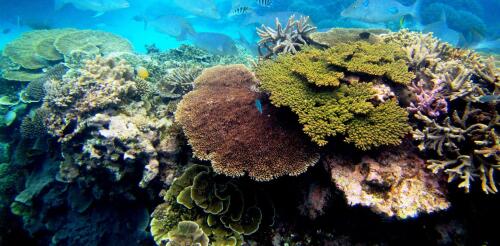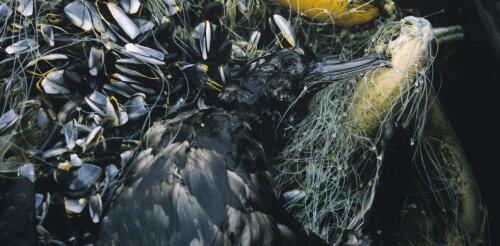Ocean conservation
There are more than 500 species of sharks in the world’s oceans, from the 7-inch dwarf lantern shark to whale sharks that can grow to over 35 feet long. They’re found from polar waters to the equator, at the water’s surface and miles deep, in the open ocean, along coasts and even in some coastal rivers. With such diversity, it’s no surprise that sharks serve many ecological functions. For example, the largest individuals of some big predatory species, such as tiger and white sharks, can have an oversized role in maintaining balances among species. They do this by feeding on prey and sometimes by just being present and scary enough that prey species change their habits and locations. In a newly published study, colleagues and I surveyed decades of research on sharks’ ecological roles and considered their future in oceans dominated by people. We found that because sharks play such diverse and sometimes important functions in maintaining healthy ocean...
Coral reefs are some of the oldest, most diverse ecosystems on Earth, and among the most valuable. They nurture 25% of all ocean life, protect coasts from storms and add billions of dollars yearly to the global economy through their influences on fisheries, new pharmaceuticals, tourism and recreation. Today, the world’s coral reefs are degrading at unprecedented rates due to pollution, overfishing and destructive forestry and mining practices on land. Climate change driven by human activities is warming and acidifying the ocean, triggering what could be the largest coral bleaching event on record. Under these combined pressures, scientists project that most corals could go extinct within a few generations. I am a marine biologist at the Smithsonian’s National Zoo and Conservation Biology Institute. For 17 years, I have worked with colleagues to create a global science program called the Reef Recovery Initiative that aims to help save coral reefs by using the scienc...
My colleagues and I mapped activity in the northeast Pacific of “dark” fishing vessels – boats that turn off their location devices or lose signal for technical reasons. In our new study, we found that highly mobile marine predators, such as sea lions, sharks and leatherback sea turtles, are significantly more threatened than previously thought because of large numbers of dark fishing vessels operating where these species live. While we couldn’t directly watch the activities of each of these dark vessels, new technological advances, including satellite data and machine learning, make it possible to estimate where they go when they are not broadcasting their locations. Examining five years of data from fishing vessel location devices and the habitats of 14 large marine species, including seabirds, sharks, turtles, sea lions and tunas, we found that our estimates of risk to these animals increased by nearly 25% when we accounted for the presence of dark v...
Human fear of sharks has deep roots. Written works and art from the ancient world contain references to sharks preying on sailors as early as the eighth century B.C.E. Relayed back to land, stories about shark encounters have been embellished and amplified. Together with the fact that from time to time – very rarely – sharks bite humans, people have been primed for centuries to imagine terrifying situations at sea. In 1974, Peter Benchley’s bestselling novel “Jaws” fanned this fear into a wildfire that spread around the world. The book sold more than 5 million copies in the U.S. within a year and was quickly followed by Steven Spielberg’s 1975 movie, which became the highest-grossing film in history at that time. Virtually all audiences embraced the idea, depicted vividly in the movie and its sequels, that sharks were malevolent, vindictive creatures that prowled coastal waters seeking to feed on unsuspecting bathers. But “Jaws”...
All of the saltwater bodies on Earth make up one big ocean. But within it, there is infinite variety – just ask any scuba diver. Some spots have more coral, more sea turtles, more fish, more life. “I’ve been diving in many places around the world, and there are few locations like the Fuvahmulah Atoll in the Maldives,” Amanda Batlle-Morera, a research assistant with the Important Shark and Ray Areas project, told me. “You can observe tiger sharks, thresher sharks, scalloped hammerheads, oceanic manta rays and more, without throwing out bait to attract them.” Identifying areas like Fuvahmulah that are especially important to certain species is a long-standing strategy for protecting threatened land animals, birds and marine mammals, such as whales and dolphins. Now our team of marine conservation scientists at the Important Shark and Ray Areas project is using it to help protect sharks and their relatives. I am a marine conservation biologis...




